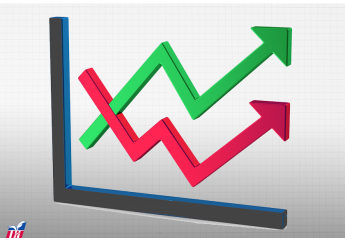Livestock Analysis | December 14, 2022

Price action: February lean hog futures fell $1.175 to $83.40, the contract’s lowest close since Oct. 14.
Fundamental analysis: Technical selling pressure and soft cash market fundamentals weighed on hog futures, even though the CME lean hog index is showing signs of bottoming. The index rose 15 cents to $81.62 (as of Dec. 12) but is still close to an 11-month low. Thursday’s preliminary index (for Dec. 13) is up 6 cents at $81.68. December futures expired today at $82.325, 70.5 cents above the index, while February futures closed $1.78 above the index, suggesting traders expect cash prices to improve only slightly in the near term. USDA’s midday wholesale pork report showed cutout values down $5.98 to $85.16, led by a drop of over $49 in bellies. Movement at midday was 174.6 loads. Traders await USDA’s weekly export sales report Thursday.
Recent losses in February hog futures suggest bearish attitudes for the price outlook into the end of the year and in early 2023. However, long-term price averages suggest a rebound of approximately $6.00 from late-year lows for the hog index to mid-February highs.
Technical analysis: Lean hog futures bears have gained the overall near-term technical advantage. The next upside price objective for the hog bulls is to close February prices above solid chart resistance at $87.00. The next downside price objective for the bears is closing prices below solid technical support at $80.00. First resistance is seen at today’s high of $85.00 and then at this week’s high of $86.00. First support is seen at this week’s low of $82.80 and then at $82.00.
What to do: Get current with advised feed coverage. Be prepared to extend coverage on additional price pressure.
Hedgers: Carry all risk in the cash market for now.
Feed needs: You have all corn-for-feed and soybean meal needs in the cash market through December.
Price action: December live cattle dipped 40 cents to $154.50, while most-active February fell 65 cents to $155.70. January feeder futures dropped 62.5 cents to $183.60.
Fundamental analysis: Cattle futures posted slight declines as the wholesale beef market pulled back from sharp advances early this week. Choice beef cutout values sank $5.96 early today to $248.99, after jumping over $10 the first two days this week. Wholesale price declines likely won’t continue as we are skeptical feedlot operators will settle for lower packer bids this week, considering blizzard conditions in the Dakotas and Nebraska and next week’s forecast is for more snow and much colder temperatures. Feedlot operators in the Southern Plains might be tempted to take less in order to reduce inventories ahead of deteriorating weather conditions, but they likely recognize the potential bullishness of a situation in which wintry weather distresses feedlot cattle. Virtually no feedlot cattle changed hands in the five-market area on Monday or Tuesday.
Cattle futures imply a modest winter-spring cash rally in the coming weeks. We think diminishing feedlot numbers will be met by improving consumer beef demand due to retail prices running below year-ago levels. Thus, a comparatively large seasonal advance seems more likely. Today’s fed cattle weakness spilled over into the feeder market as well, despite concurrent slippage in corn and wheat futures. Conversely, renewed soybean meal strength couldn’t have encouraged yearling buying from feedlot managers, especially with wintry weather bearing down on the Plains.
Technical analysis: Although bulls again proved unable to force a breakout above the range of resistance between Tuesday’s high of $156.775 and the contract high at $157.225 in February futures, and had to watch as the market moved lower, they still own the short-term technical advantage. Indeed, a breakout above the previously mentioned resistance area could open the door to a quick test of $160.00 and higher. Still, the low-range close left the market just above support at the daily low of $155.575. A drop through strong support between the 20- and 40-day moving averages at $155.32 and $155.20, respectively would have bears targeting last week’s low at $152.75.
Bulls still hold the short-term technical advantage in January feeder futures. Bears proved unable to penetrate initial support at yesterday’s low of $183.075, much less make a run at the 10-day moving average near $182.88. A drop below that level would open the door to a challenge of the 20- and 40-day moving averages between $181.20 and $180.52, respectively. Today’s high confirmed initial resistance around $184.50, with backing from last Friday’s high of $184.90. A close above that level would have bulls targeting the $188.00 area.
What to do: Get current with advised feed coverage. Be prepared to extend coverage on additional price pressure.
Hedgers: Carry all risk in the cash market for now.
Feed needs: You have all corn-for-feed and soybean meal needs in the cash market through December.






